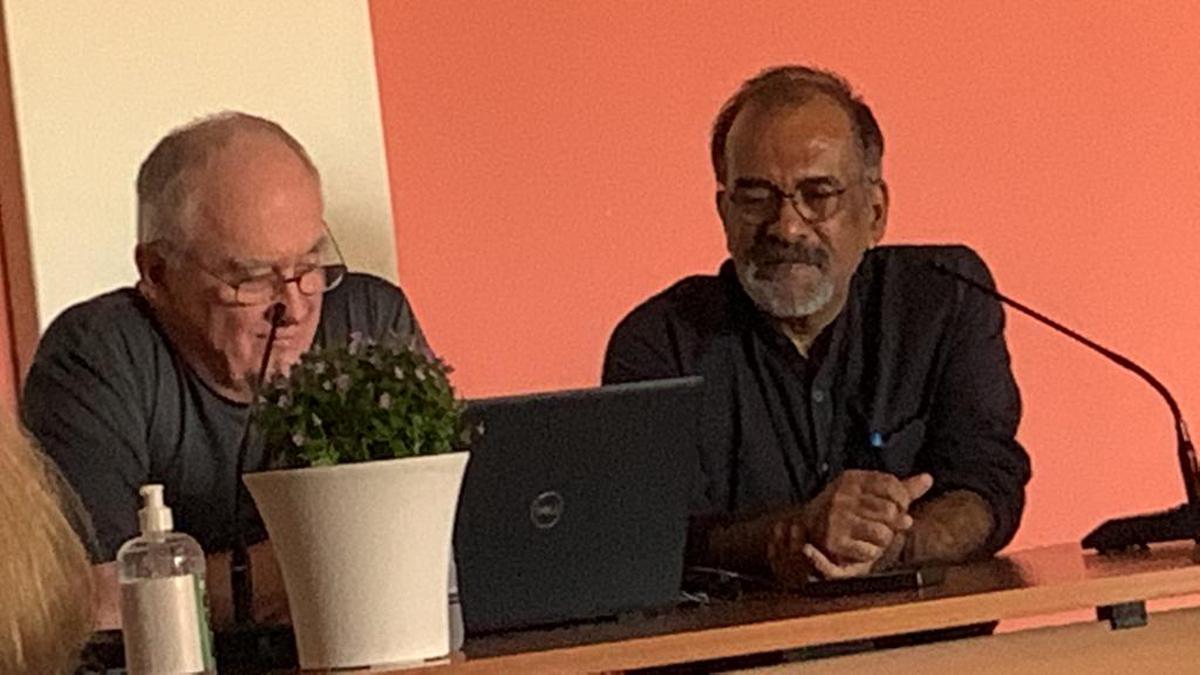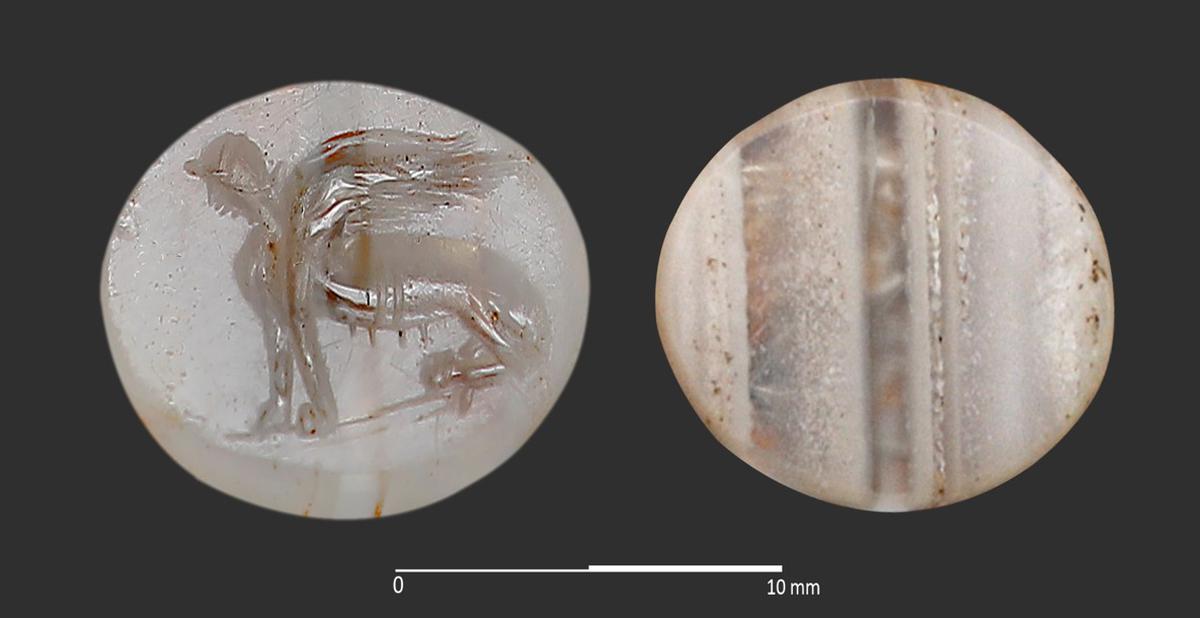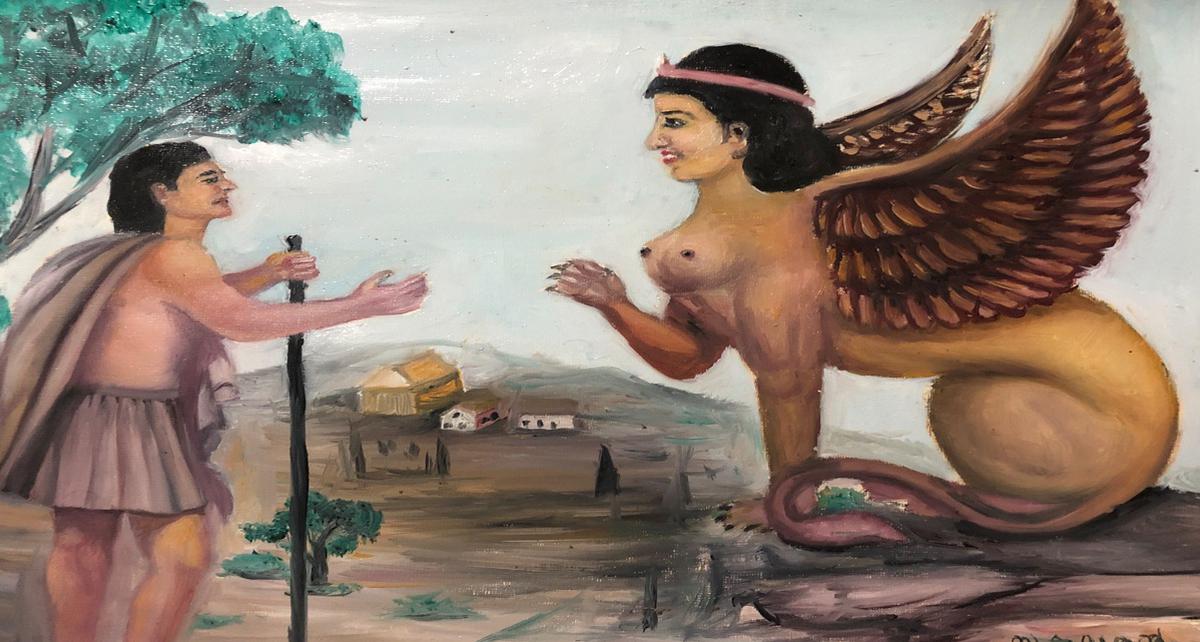
[ad_1]
Intaglio, along with other excavated material, establishes that Pattanam had a strong Greek connection, says expert
Intaglio, along with other excavated material, establishes that Pattanam had a strong Greek connection, says expert
“How did it come to Pattanam?” Researcher Deepak Padmanabhan is speaking of the intaglio or Sphinx seal ring that was found in 2020 during the excavations at Pattanam (the ancient port city known as Muziris), roughly 30 km from Kochi. “We have to understand its context,” he says.
The ring was discovered, as the world battled the novel coronavirus. So, the tiny oval ring seal was shut away in a locker without much fanfare. Made of banded agate — a precious stone that belongs to the Indian subcontinent — this finger ring was used as a seal to leave an impression on a document or on sealing wax.
After two years of cross examining excavated materials, time lines, old cartographs, and after discussions with international historians and academicians, P.J. Cherian, former director of Kerala Council for Historical Research (KCHR) with PAMA Institute for the Advancement of Transdisciplinary Archaeological Sciences, presented a paper titled The She Sphinx That Flew Over The Red Sea: Artefact, Author, Agency and Audience, which he co-authored with Padmanabhan of Queens University and Siddhartha Saha of Visva Bharathi University at the recent Red Sea Project X Conference in Crete (July 2022).

Professor Steven Sidebotham, Director, Berenike Site, with PAMA delegate P.J. Cherian at the Red Sea Conference X, 2022 in Crete
| Photo Credit: PAMA
Fresh data
“During the second urbanisation that began from 1000 BCE with the discovery of iron in the Indian subcontinent, Pattanam became a hub of the world connecting several port sites during the time period starting from 100 BCE to 400 CE. In the last 20 years, there has been an exponential increase in data that has thrown up new evidence,” says Cherian, adding that the gem, along with other excavated material, establishes that Pattanam had a strong Greek connection. Muziris is mentioned in ancient Greek and Roman sources, as well as in Sangam literature.
The ring seal was found in the backyard of the house of a local artist named Sukumaran, by a student intern Pravitha P.A., as she sieved the soil in Trench No. 65 at a depth of 115 cm.
“There is evidence of people here working with numerous precious stones such as agate, amethyst, beryl, carnelian, chert, garnet, onyx, quartz, and topaz. Substantial lapidary remains such as raw materials, rough outs, tiny flakes, semi-finished or discarded precious stone artefacts have been found in most of the 66 trenches so far excavated at Pattanam,” says Cherian.
The trench, that produced the Sphinx intaglio, also had leftover traces of banded agate and other precious stones.
Almost 4.5 million pieces of Indian pottery and 1,41,348 pieces of non-Indian pottery has been found so far.

Sphinx seal ring
| Photo Credit: PAMA
A journey to Thebes
Cherian journeyed back to Thebes, where the Sphinx originated, after his presentation in Crete.“The Sphinx was a hugely popular character in Mediterranean mythology, with strong links to the city of Thebes in the Boeotian region of Greece. Referred to as a winged female creature with its home in Cithaeron Mountain, she was sent to Thebes to devour the Thebans for failing to atone for an ancient crime,” he says, adding that the most popular tale associated with her is that of Oedipus. The style of the gem and carving technique of the ring suggests that it was created between the first and second centuries CE.
Cherian points out that the Roman emperor Augustus Caesar used a seal ring with a Sphinx to sign documents at the beginning of his political career. He also believes that some seal rings may have travelled with their owners or as merchandise.
Evidence shows that materials like teak wood, precious stones, glass beads, spices, and bamboo matting were taken to the Mediterranean from Muziris, says Cherian adding that he saw in Greece “tonnes and tonnes of coconut husk and bamboo matting.”
The most popular port for travellers to Muziris seems to have been Berenike, on the coast of the Red Sea in Egypt. Cherian quotes Dr. Steven Sidebotham, director of Berenike excavations, to suggest that South Asians resided at Berenike.
At Pattanam, artisans used materials from India to create artefacts with images from foreign cultures. “There was a high degree of cultural mixing, it is clear that we were very much there and they here,” says Cherian, pleased that the “Sphinx was reborn after 2,000 years,” and he made that journey back to her roots in Thebes.

An artist’s impression of the Sphinx
| Photo Credit: PAMA
Three gems
The Sphinx gem is the third intaglio so far found at Pattanam, with the other two intaglios – seal rings – being carved images of a pouncing lion (2010) and Tyche or Fortuna, (2014) the Greco-Roman goddess of good luck. All the three gems were retrieved from the northern sector of the 70-hectare Pattanam archaeological mound of which only less than 1% has been excavated so far.
[ad_2]
Source_link